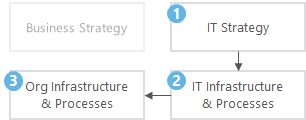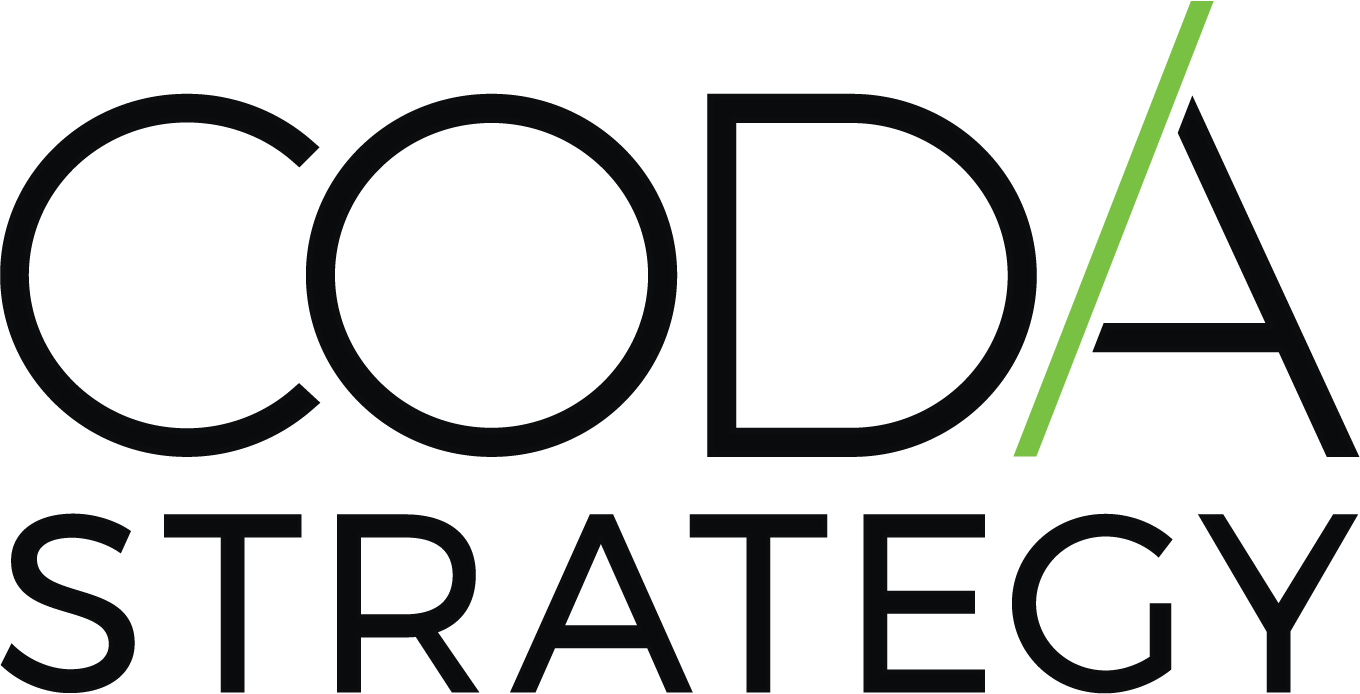The need for firms to align business and IT is more pressing than ever.
First, firms must constantly adapt both to an ever-changing business landscape and to emerging digital technologies that enable new ways of working. To stay ahead of this change, firms continue to increase spending on IT solutions every year.
However, unless their business and IT strategies are aligned, firms may also waste precious time and money on IT. Research shows that firms achieve better business performance, when key IT resources are aligned with business strategy 1.
However, strategic alignment between business and IT continues to be elusive. CIO surveys show that proper alignment remains a pressing priority for top management.
Therefore, a comprehensive approach to alignment is critical for both strategy and operations. This is the essence of digital strategy. What we need is a comprehensive approach to manage alignment between:
- Business strategy
- IT strategy
- Organizational infrastructure & processes
- IT infrastructure & processes
Through the allocation of:
- Financial resources
- Implementation projects
In order to improve:
- Financial performance
- Productivity
- Customer benefits
What’s the best way to align business and IT?
Given the challenges in achieving proper alignment coupled with the potentially large payoffs in business improvement, a firm that is serious about alignment should adopt a proven framework, such as the strategic alignment model.
Backed by 30 years of research and with over 5,000 academic citations, the strategic alignment model (SAM) has stood the test of time2. The framework consists of four domains (two business and two IT), and 12 dimensions.

Using the Strategic Alignment Model to Align Business and IT
We can use the framework to align a firm’s business and IT in three steps3:
- Assess current state and select an alignment strategy
- Compile a catalog of current and proposed IT projects
- Reconcile the alignment strategy and project catalog
So let’s walk through a practical example.
1. Assess current state and select an alignment strategy
First, using the SAM, develop a catalog of the firm’s capabilities. For example:
| Domain | Capabilities |
|---|---|
| Business strategy | product offerings, market selection, outsourcing strategy |
| IT strategy | buy vs build, cloud strategy, joint partnerships |
| Org infra & procs | admin structure, business processes |
| IT infra & procs | enterprise architectures, analytics skills |
Then, select an alignment strategy across those domains:
- The first domain anchors the alignment strategy and receives the most management attention
- The second domain serves as the pivot for the strategy
- The third domain is the most impacted and involves the greatest change
For example, the following alignment strategy starts with business strategy:

2. Compile a catalog of current and proposed IT projects
Next, we categorize the list of all digital projects involving IT resources that are in-flight or proposed, according to:
- Domain: business strategy, IT strategy, org infra & procs, or IT infra & procs
- Priority: High, medium, low
Mapped onto the SAM, the catalog defines the implicit alignment strategy.
For example, the following project catalog indicates an implicit alignment strategy that begins with IT strategy, crosses IT infra & processes, and impacts org infra & processes.
| Project | Domain | Priority |
|---|---|---|
| IT outsourcing | IT strategy | High |
| Cloud consolidation | IT strategy | High |
| New data center | IT infra & procs | High |
| New CRM | IT infra & procs | Med |
| BPO project | Org infra & procs | Med |
| Call center training | Org infra & procs | Med |
This actually implies the following alignment strategy:

3. Reconcile the alignment strategy and project catalog
Finally, compare the desired alignment strategy with the implicit alignment strategy in the project catalog.
Management can then either:
- Reprioritize digital projects to achieve the desired alignment strategy; or
- Shift managerial focus to execute the implicit alignment strategy
In this example, suppose the firm decides to shift to the implicit alignment strategy. With this new strategy, the firm should shift from business identifying new growth opportunities to IT identifying new opportunities to provide customer value.

Conclusions
Determining proper alignment between business and IT, using the Strategic Alignment Model, is a necessary first step on the long, rewarding journey to digital transformation. Firms that maintain the necessary rigor to see this through ultimately enjoy better business outcomes and better success on IT endeavors.
Footnotes
- Luftman, J., Lyytinen, K., & Zvi, T. B. (2017). Enhancing the measurement of information technology (IT) business alignment and its influence on company performance. Journal of Information Technology, 32(1), 26-46.
- Henderson, J. C., & Venkatraman, H. (1993). Strategic alignment: Leveraging information technology for transforming organizations. IBM systems journal, 32(1), 4-16.
- Avison, D., Jones, J., Powell, P., & Wilson, D. (2004). Using and validating the strategic alignment model. The Journal of Strategic Information Systems, 13(3), 223-246.







A New Digital Operating Model Can Take Three Forms
April 18, 2021[…] many firms, there is a separation of duties between business and IT. Thus, business-IT alignment is important. In this case, the firm’s IT strategy must be capable of supporting and […]
How to Build a New IT Strategy Roadmap
January 10, 2023[…] goal of an IT strategy is to align technology investments with business objectives, and to guide decision-making about which IT projects to prioritize. It provides a framework for IT […]